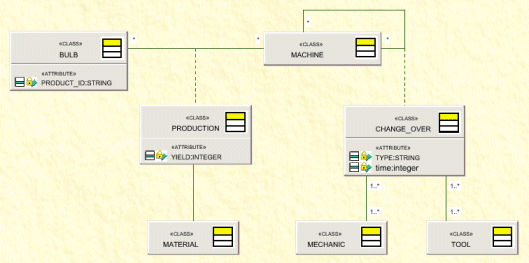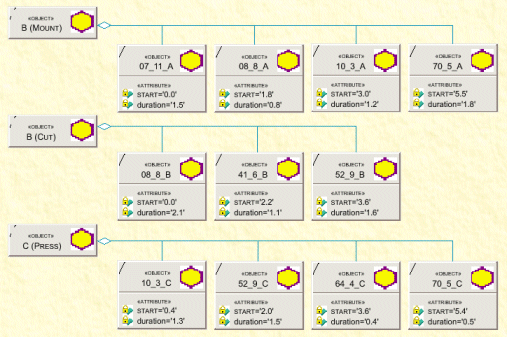Object-oriented fine programming of industrial production processes
Sponsors:
GE Lightning Co. (Industrial Project)
Period:
1998
Project leader:
András Pataricza, Ph.D.
Participants:
György Csertán, Gyula Román
Project aim:
In the framework of this industrial project the application of UML for describing and optimizing industrial processes was investigated.
A crucial question of industrial process optimization is the integration of data acquisition, database design, and mathematical optimization. If these tasks can be performed using the same modeling environment then data consistency, re-use and maintainability are assured almost automatically. Our approach proposes the recently created standard Unified Modeling Language (UML) for these purposes. UML has well-defined syntax and semantics, supports different views from static structures to dynamic behavior, and offers extensions. The process manager can elaborate the model of the process, the corresponding constraints and requirements entirely in the UML environment. Based on the UML description, the input format of the mathematical optimization is generated automatically. Visualization of the results can be performed by external modules and by back annotation into the process model.UML in industrial process modeling
The following main characteristics make UML attractive in modeling of industrial processes:Modeling and evaluation
- Precise and easy-to-understand graphical syntax
- Well-defined semantics
- Different views (environment interaction, logical structure, behavior, implementation structure)
- Re-usable designs
The UML model of the process consists of the following parts:
- System/environment interaction (Use case diagram)
- Static model of production (Class and object diagram)
- Dynamic model of production (Activity diagram)
- Production constraints (UML constraints in object diagram)
The UML model is transformed to a linear programming model and solved by commercial mathematical tools.
Back annotation provides visualization of the results in the form of Object diagrams with computed attributes (e.g. daily schedule).
Advantages
This technology lies on the effective transformation of the UML model into a linear programming problem, which is made automatically.
Data consistency, re-use and maintainability is assured since data acquisition, database design and mathematical optimization are performed in the same framework.
Further information:
András Pataricza, Ph.D.




